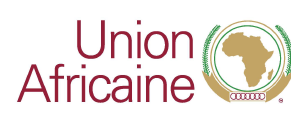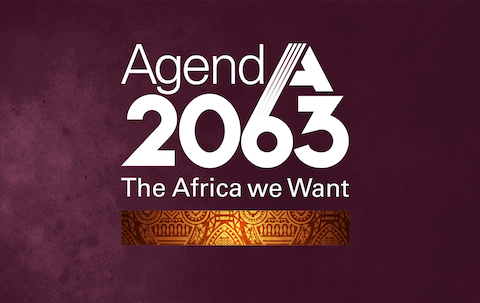Keynote address by Dr. Nkosazana Dlamini Zuma, Chairperson of the African Union Commission, to the World Association of Girl Guides and Girl Scouts (WAGGGS) Africa Regional Conference Lagos, Nigeria, 12 August 2013
Keynote address by Dr. Nkosazana Dlamini Zuma, Chairperson of the African Union Commission, to the World Association of Girl Guides and Girl Scouts (WAGGGS) Africa Regional Conference Lagos, Nigeria, 12 August 2013
African Young Women: Soaring towards Excellence
Keynote address by Dr. Nkosazana Dlamini Zuma, Chairperson of the African Union Commission, to the World Association of Girl Guides and Girl Scouts (WAGGGS) Africa Regional Conference
Lagos, Nigeria. 12 August 2013
I salute the leadership of the Girl Guides of the World, the Africa region and Nigeria and all you Girl Guides and Scouts
Ladies and Gentlemen
It is such an honour for me to address this gathering of young African leaders and with humility accept the Award for Woman of Outstanding Achievement.
I address you as young African leaders, because even though we say that the youth are our future, we must always and everywhere remind ourselves that we must buid tand invest in that future today. I am very happy to be amongst those who have dedicated their lives to investing in girls
This is particularly true for our beloved continent, since over seventy percent of our population is under the age of 30 years, and the majority are girls and young women. By 2025, one quarter of the world’s young women and men under 25 years will be African.
We are not only blessed with a youthful population, but we also have abandoned natural resources, land; forests and marine resources, fossil and renewable energy as well as mineral resources.
Those of you who are studying or have studied Geography will also agree with me that Africa is large, with a land size of 30,331,532 square kilometres – like a large island, surrounded by two oceans. It can therefore fit on its landmass China, India, the USA, Western Europe and still have space for Japan and a few other countries.
The greatest and our most precious resource we have, however, remains our people. If we therefore want to realize our dream of an Africa that is integrated, people-centred, prosperous and at peace with herself and her environment, we must invest in yourselves - the young girls women, and not forgetting the young men of Africa.
Girl Guides and Scouts, Fellow Africans
Amongst the ethos of the Girls Guides and Girl Scouts is your intergenerational approach to empowerment and leadership development. This is an ethos which the African Union, Your Union, embraces.
As older generations, we can share our experience of life, society and the world, and we are often in positions of authority and power, whether in families, communities or society as goverments.
As adults – whether as mothers, fathers, uncles or aunts; as neighbours, priests, pastors or imams; as teachers, journalists, politicians, artists, writers and musicians; as Guides, Scout leaders and public figures - we all have the duty to mentor, to share experiences, to protect, to provide opportunities and to work for a better life for the next generations.
This not only means providing guidance and sharing our experiences, but it means that we must listen to and engage with the views of young people, We must listen to you and engage you.
Young women and men, on the other hand, have energy, are creative, innovative and impatient and are prone to take risks. An enabling environment for young people to soar to excellence means an environment where energies, creativity, impatience and risk are geared towards positive self, peer, community and societal development.
The early Pan African movements, who helped to liberate our continent from slavery, colonialism and apartheid had in its ranks thousands upon thousands of young women and men, who used their energy and creativity, who were impatient to see change and who often took the ultimate risk, to free their people. As we this year celebrate fifty years since the formation of the Organisation of African Union (OAU) which is now the African Union, we must pay tribute to these early generations of youth.
Today’s generations of young Africans have an equally burdensome responsibility – to add your energy, creativity, your impatience and innovation, and be prepared to take risks – to ensure that our dream of an integrated, people-centred, peaceful and prosperous Africa becomes a reality, in your lifetime.
Girl Guides and Scouts, Ladies and Gentlemen
The African Union therefor has great expectations of the role you should play in helping to shape the future of the continent.
As members of the Girl Guides and Girls Scouts - and indeed all members of youth formations, including your sibling organization the Boys Scouts, young people in social, religious, cultural, educational, environmental clubs and societies - you have taken the first step, to be involved. Involvement in some form of organization from a young age is important to your personal development.
Being involved in organisation helps develop a sense of self-confidence, of being part of a group (other than your family or your schoolmates) and it fosters social and organizational skills. In addition, being part of organization from an early age also makes us aware about society, the world we live in and that we are all interdependent. Like the song we sang earlier today
Organization also teaches us that we can achieve excellence if we work hard and focus. It teaches us that we can and must contribute towards a better society and world - as individuals and through joint action. It teaches us – like the Guides’ Global theme that ‘together we can change our world.’
I therefore salute this 10 million-strong movement of Girl Guides and Girls Scouts and wish the African Region all the best with reaching their target of two million members by 2020.
A second expectation from the African Union is your role in energizing and as a partner in our path towards prosperity. As a Union and Member States of the African Union, as adults and parents of this continent, we know our responsibility in this regard, which is to ensure that you are educated, that your basic needs are met, that you have opportunities to participate in the economy, to express yourself freely and that the rights of girls and young women, are known, protected and defended. Ive heard what your priorities are: ending violence, ending child trafficking. We heard you and we will work with you on these issues, and I heard your request to be an Observer and we should work on a Memorandum of Understanding to give this effect.
This is why the African Union adopted the African Youth Charter in Banjul, in 2006:-
Recognizing (that) youth are partners, assets and a prerequisite for sustainable development and for the peace and prosperity of Africa.
Therefore, when we are talking about priorities such as investing in education, training, science, technology, research and innovation, we need to hear your voices and the contributions you can make.
I spoke earlier of the enormous natural and other resources we have on the continent, but they can only lead to shared prosperity if we have artisans and architects, farmers and pharmacists, miners, botanists, engineers, economists and electricians, doctors, nurses, lawyers, quantity surveyors and midwives, soft-wear engineers, business and entrepreneurs, artists and musicians that will ensure the development of world-class African companies and brands in every single economic sector, whether they are large, small or medium and in every area of human endeavor. That is why we call on all girls and young women to go into all these areas, to have a critical mass, without which Africa cant develop.
We also need young people in the public sector and in civil society, to ensure that our states and government serve the people by playing a truly developmental role and that we build inclusive societies.
Above all, with 60% of unused arable land in the world, you are the next generation that must get involved in agriculture so that Africa can feed itself and the world. Young Africans, especially young women must therefore learn the business of farming, agricultural sciences, the food processing sectors, marketing and logistics, in order to build and grow our agro-businesses and sectors.
In a similar vein, young Africans must be at the forefront of advocating for an integrated Africa, as we saw today girls and young women from so many countries. We can only build shared prosperity when our countries and region trade with each other first, before looking across the seas to import what are basic needs of our continent and import finished products when we export all the raw materials to make such products.
In addition, young Africans must take special interest in plans to integrate the continent through infrastructure. You must be interested, because it should be possible for you in the future to drive or take a speed train from Lagos to Algiers, Cairo and Djibouti, or from Banjul to Dakar, Freetown, Djamina to Juba, Addis Ababa, and Mombasa, or from Tunis to Maputo to Mbabane, to Cape Town and Luanda. You must also be interested whether you will on your journeys have access to fast broad band internet, to reliable electricity, energy and clean water and sanitation, no matter where you are on the African continent.
With rapid urbanization, young Africans also have an interest in the state of our cities and towns, whether they are well-planned, their infrastructure maintained, with green spaces and recreation facilities, bulk infrastructure and adequate housing.
You must also be interested in knowing whether ECOWAS, the African Union and all African countries are making progress with free movement of people and goods, because you want to experience the hospitality, natural beauty and cultures of other countries on your continent. This question is also important to enable young entrepreneurs to explore markets, innovations and form business links beyond the borders of their countries and regions, and help to build African business innovators and leaders.
An important process is the ongoing process of self-definition, who we are, what are our common Pan African values and ethos, and to be proudly African. If you are not proud of who you are, you cannot succeed.
Young people with their energy and innovations have always played an important role in taking our traditions, culture, history and life experiences and representing it in new ways and through new means. Our continent has the fastest growing mobile phone sector in the world, but we must be more than users of technology, we must also make cyberspace our own, through content that is African – in its rich diversity and languages.
Each generation must work for a better world for itself and future generations.
Your generation must therefore be the engine for African integration, peace and prosperity – the fuel and driver of its Renaissance.
Girl Guides, Ladies and Gentlemen
The African Union knows that for us to succeed, we must develop the potential of both men and women. We therefor pay special attention to the empowerment of young women and girls.
For us, the empowerment of girls and young women means making sure that they grow up to have their contributions valued in families, communities and societies, and that they have the space to make informed decisions and choices. Empowering girls and young women means that no-one should tell you that you cannot reach your goals and dreams, simply because you are a girl or a woman .
This means that we advocate, work for and monitor progress in the education of girls and young women in all our countries, encouraging parents to send and keep their girls and boys in schools.
We also engage with girls and boys on the need to value their bodies and to respect each other. We warn against the dangers of teenage pregnancy, HIV and AIDS, and advocate for policies that enable girls to have information and to protect themselves.
We also advocate for our societies to abolish harmful cultural and religious practices – such as child marriages - that infringe on the rights of girls and women. We recently had an AU conference on Maternal and Infant Mortality. Research shows that teenage mothetrs makes up a disproportional part of maternal and infant mortality. We must there
Lets not marry children, let they be children. Women’s rights, the rights otf girls and young women are human righs.
The African Gender Protocol commits the African Union and its Member States to work towards achieving Gender Parity by 2020. We are making progress in education and in the political sphere, but only ten (10) countries have met the interim goal of having 30% women in their parliaments and cabinets. We must congratulate Rwanda, the highest number of women MP’s in the world, as a role model for us.
In other spheres of society – the media, academia, business, religious and cultural institutions, in agriculture, professions and artisanships, in science, ICT and technology – progress is still very slow.
The excuse is often that they can’t find qualified and capable women to fill these positions. We also know that this is not always true – that if women are given a chance, they can make a difference in any organization or institutions – whether in the public or private sectors. Your generation of girls and young women, dear Girl Guides and Girl Scouts, must learn, develop and soar to excellence, so that not a single glass ceiling remains and we achieve our goal of gender parity in all spheres of life by 2020.
It is for this reason – our trust and confidence in the future of Africa – that the African Union decided to embark on the process to develop an agenda for the future – called Agenda 2063.
Through this agenda we want to achieve three things: firstly, to agree on the Africa we want; secondly, to set short and medium term milestones and concrete strategies on how we will get there, and thirdly, to define the role each of us should play to achieve this Agenda.
We therefore invite the Girl Guides and Scouts Association to also make their contributions, which should reach us by the end of October this year.
Girl Guides and Girls Scouts, Ladies and Gentlemen
You are the future of the continent, and you must build that future today. You must be strong, be focused and have confidence to reach your dreams. You must be role models for other girls and young women: in Africa and the world, for current and future generations.
You are Africa’s future – and I am confident that the future looks bright. We shouldn’t just want you to reach where we are, but beyond.
Wishing you fruitful deliberations during this week and looking forward to your inputs on Agenda 2063 and to working with you.
I thank you.
Ressources
Report of the Chairperson of the Commission on the Situation in Somalia
Agenda 2063 is Africa’s development blueprint to achieve inclusive and sustainable socio-economic development over a 50-year period.
39th AU summit Media Accreditation Platform
Transforming Migration Governance in Africa








